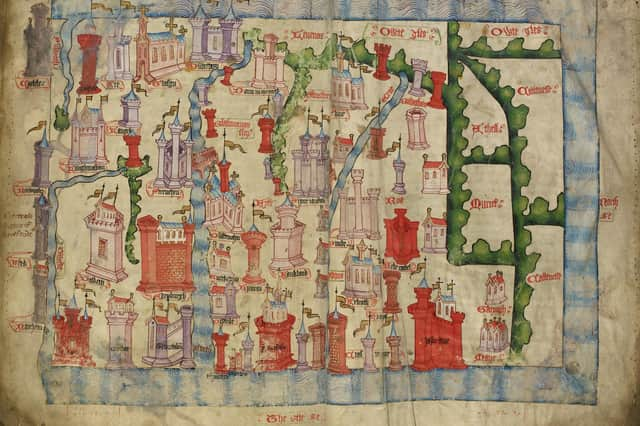Hardyng map of Scotland shows the benefits of taking a sideways look at familiar images – Scotsman comment


Relatively simple changes, such as not putting north at the top, can seem odd or even revolutionary.
For example, “South Up” maps of the world have been used to make a point about the dominance of the northern hemisphere in global affairs.
Advertisement
Hide AdAdvertisement
Hide AdAnd it can be surprising for many that the familiar Mercator projection significantly distorts the size of countries; the Gall-Peters projection gives a much better idea of size, particularly when comparing places like Greenland and Africa, but a globe provides the best view.
One of the earliest maps of Scotland was drawn in the early 1400s by an Englishman, John Hardyng, who was apparently sent on a secret mission to spy out the land by King Henry V.
It has now gone on display at the University of St Andrews' Wardlaw Museum after being loaned by the British Library in London.
For some reason, Hardyng chose to put the West at the top of his map, while the Forth is depicted as almost cutting Scotland entirely in half, perhaps underlining its importance as both a geographical barrier and a trade route.
The map, which is virtually square, would not have been of much use for someone trying to navigate the countryside with a compass, but would have given a rough idea of where the main settlements were.
It is a way to see Scotland through medieval eyes and a reminder that taking a sideways look at familiar images can sometimes provide a useful and instructive change of perspective.
A message from the Editor:
Thank you for reading this article. We're more reliant on your support than ever as the shift in consumer habits brought about by coronavirus impacts our advertisers.
If you haven't already, please consider supporting our trusted, fact-checked journalism by taking out a digital subscription.
Comments
Want to join the conversation? Please or to comment on this article.
